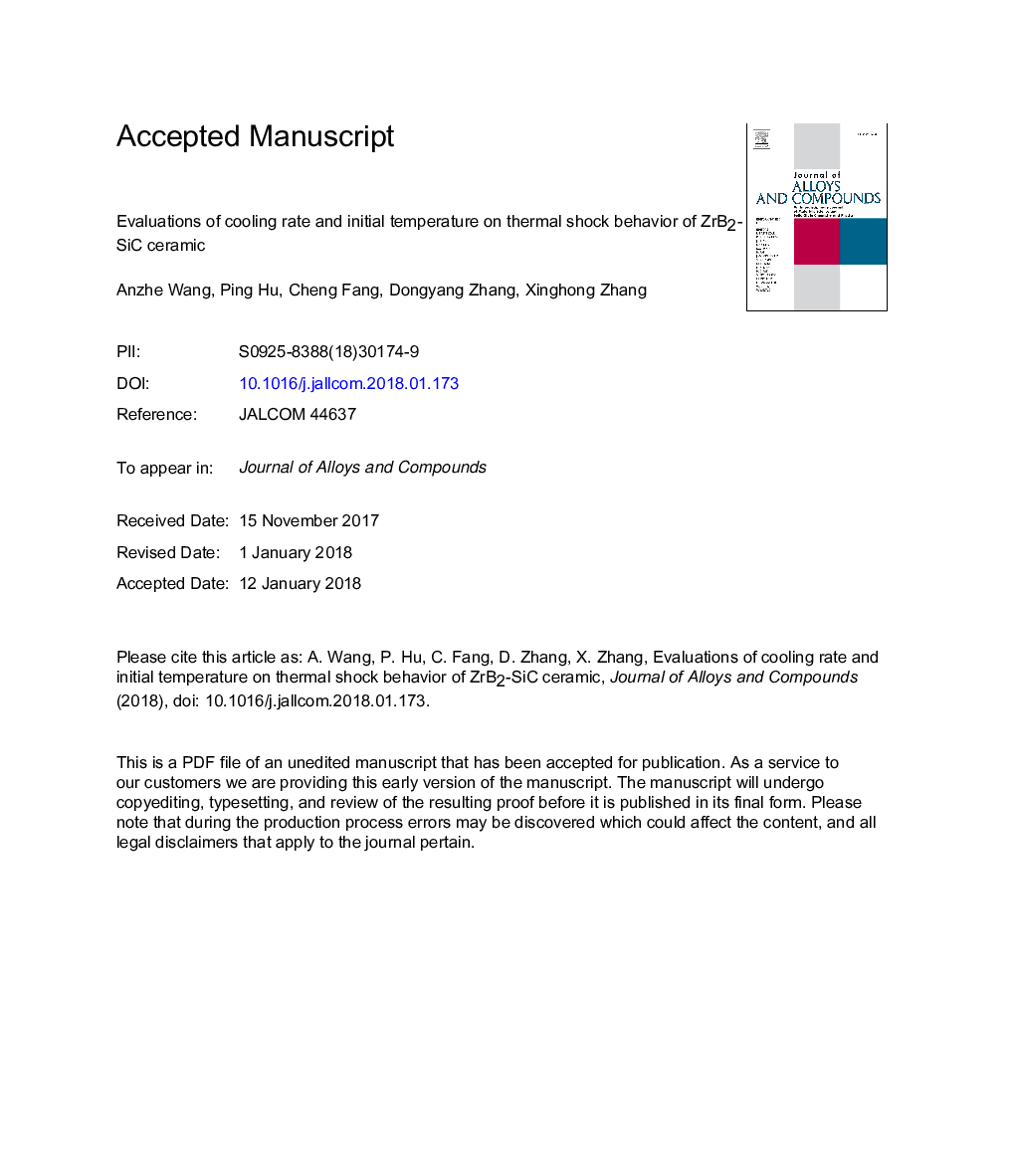| Article ID | Journal | Published Year | Pages | File Type |
|---|---|---|---|---|
| 7993549 | Journal of Alloys and Compounds | 2018 | 21 Pages |
Abstract
The effects of cooling rate and initial temperature on thermal shock behavior of ZrB2-SiC ceramic were studied by water spraying method with a thermocouple real-time temperature acquisition technique for the first time. It was shown that the cooling rate could be adjusted by changing the water flow rate, and the fracture behavior strongly depended on both the cooling rate and initial temperature. When the extreme value of cooling rate was constant, the decrease of initial temperature would lead to the increase of thermal stress, accompanied by a more serious damage of material, which was mainly because of the nonlinear relationship between thermal expansion coefficient and temperature.
Related Topics
Physical Sciences and Engineering
Materials Science
Metals and Alloys
Authors
Anzhe Wang, Ping Hu, Cheng Fang, Dongyang Zhang, Xinghong Zhang,
